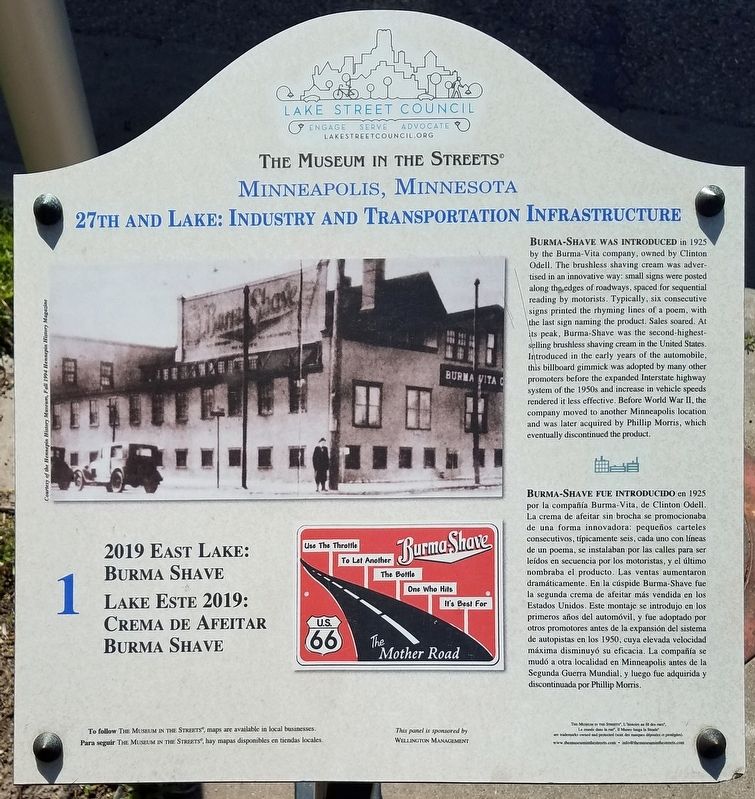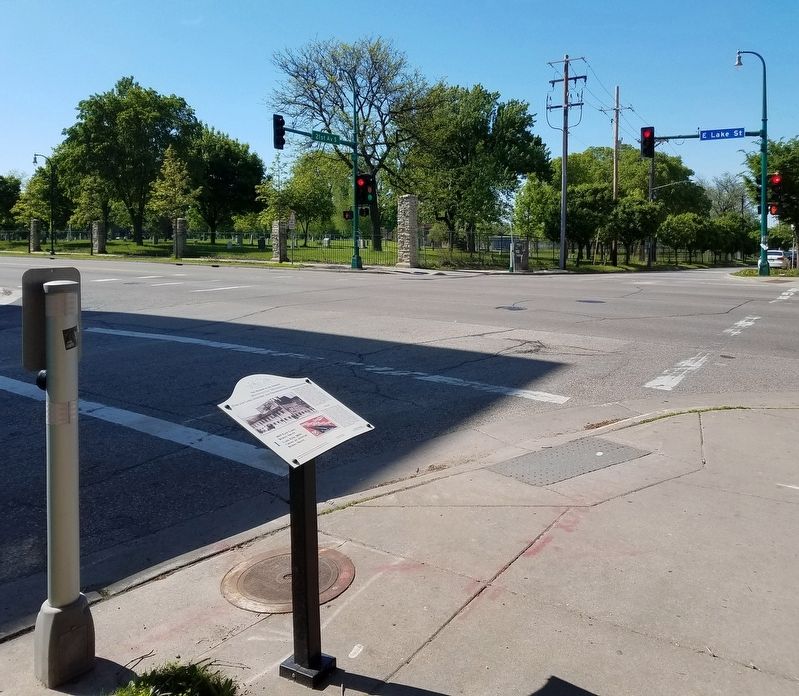Powderhorn in Minneapolis in Hennepin County, Minnesota — The American Midwest (Upper Plains)
2019 East Lake: Burma Shave
The Museum in the Streets: Minneapolis, Minnesota
— 27th and Lake: Industry and Transportation Infrastructure —
Burma-Shave was introduced in 1925 by the Burma-Vita company, owned by Clinton Odell. The brushless shaving cream was advertised in an innovative way: small signs were posted along the edges of roadways, spaced for sequential reading by motorists. Typically, six consecutive signs printed the rhyming lines of a poem, with the last sign naming the product. Sales soared. At its peak, Burma-Shave was the second-highest-selling brushless shaving cream in the United States. Introduced in the early years of the automobile, this billboard gimmick was adopted by many other promoters before the expanded Interstate highway system of the 1950s and increase in vehicle speeds rendered it less effective. Before World War II, the company moved to another Minneapolis location and was later acquired by Phillip Morris, which eventually discontinued the product.
Erected 2012 by The Museum in the Streets®. (Marker Number 1.)
Topics and series. This historical marker is listed in these topic lists: Industry & Commerce • Roads & Vehicles. In addition, it is included in the The Museum in the Streets®: Minneapolis, Minnesota series list. A significant historical year for this entry is 1925.
Location. 44° 56.895′ N, 93° 14.535′ W. Marker is in Minneapolis, Minnesota, in Hennepin County. It is in Powderhorn. Marker is at the intersection of East Lake Street and E. Lake Street, on the right when traveling north on East Lake Street. Touch for map. Marker is at or near this postal address: 2121 E Lake St, Minneapolis MN 55407, United States of America. Touch for directions.
Other nearby markers. At least 8 other markers are within walking distance of this marker. 2107 East Lake: Porky's Drive-In (within shouting distance of this marker);
2108-30 East Lake: Twin City Rapid Transit Lake Street Station and Car Yard (about 400 feet away, measured in a direct line); 2217 East Lake: Axel's Lunch Room (about 800 feet away); Hiawatha-Minnehaha Corridor (approx. 0.2 miles away); Snelling Avenue: African American Community (approx. 0.3 miles away); Martin Olav Sabo Bridge (approx. 0.3 miles away); Minneapolis-Moline (approx. 0.4 miles away); 3010 Minnehaha Avenue South: Fire Station No. 21 (approx. 0.4 miles away). Touch for a list and map of all markers in Minneapolis.
Credits. This page was last revised on February 12, 2023. It was originally submitted on May 27, 2019, by McGhiever of Minneapolis, Minnesota. This page has been viewed 297 times since then and 33 times this year. Last updated on May 29, 2019, by McGhiever of Minneapolis, Minnesota. Photos: 1, 2. submitted on May 27, 2019, by McGhiever of Minneapolis, Minnesota. • Andrew Ruppenstein was the editor who published this page.

